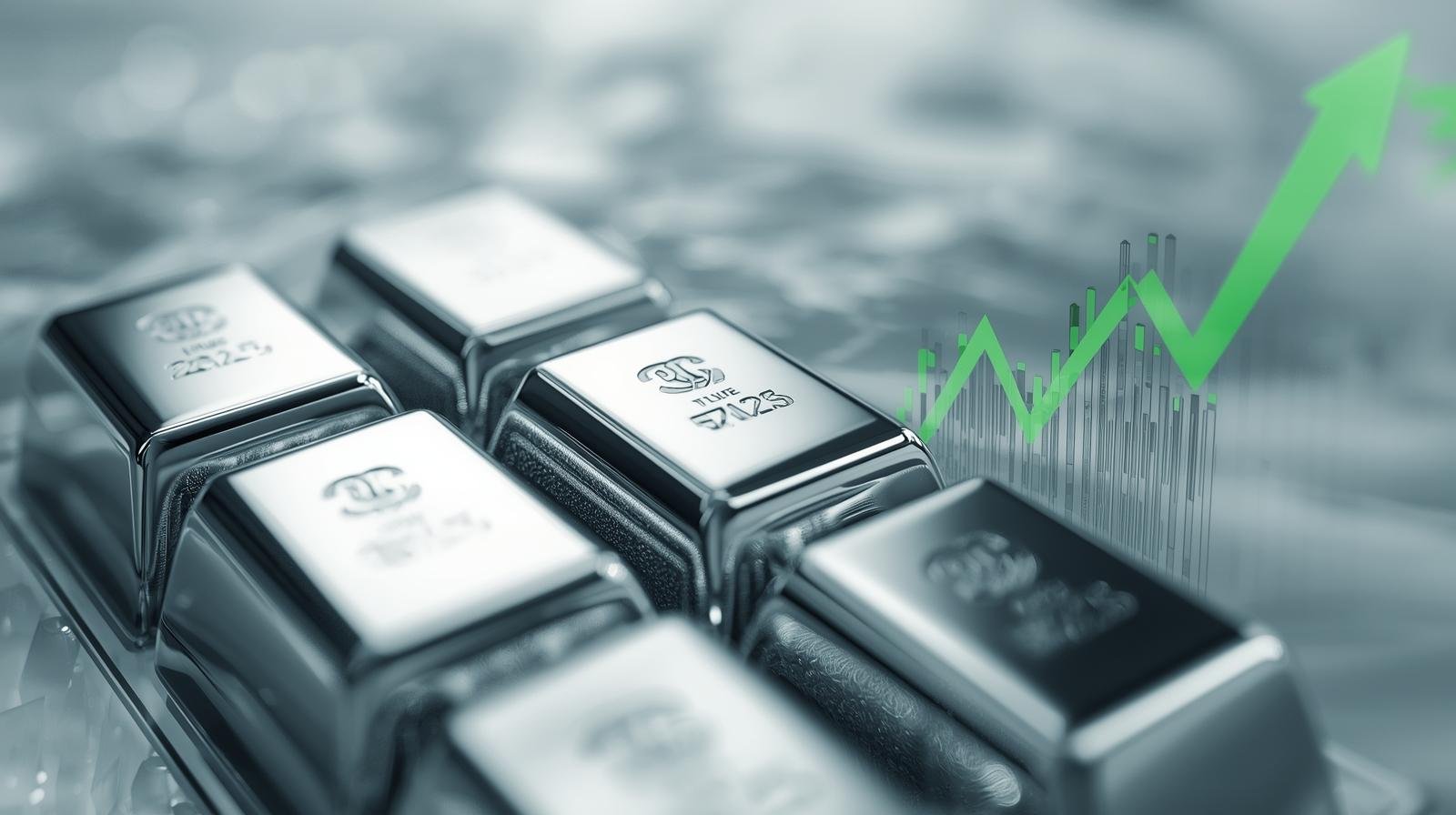Silver Hits All-Time Highs: The Dual-Metal Breakout That’s Reshaping 2025
Silver just stepped into uncharted territory — printing fresh all-time highs — and suddenly a “forgotten” metal is front-page again. But the real story goes deeper than any headline. Silver is both money and machine, a monetary hedge and an industrial workhorse. Understanding that dual nature is the key to reading this market — in 2025 and beyond.
Silver’s Dual Identity: Precious Metal and Industrial Engine
Unlike gold, which is primarily held for monetary and jewelry demand, silver wears two hats. It’s a store of value and a core input into modern industry — from electronics and medical devices to solar photovoltaics and EV components. That dual identity is what gives silver its unique character: it can behave like a risk-off hedge in monetary stress and a pro-cyclical commodity when factories hum.
Practically, this means silver reacts to two feedback loops: monetary dynamics such as real yields, the U.S. dollar, and inflation expectations — and industrial throughput driven by technology and clean energy demand. When both align, the results can be explosive.
A Short History: From Coinage to Clean Tech
For centuries, silver underpinned coinage and cross-border trade. The late-1970s mania and the 1980 peak taught markets how leverage can distort scarcity narratives; the 2011 spike arrived in the wake of unconventional monetary policy. Today’s market is different again: the demand base is more diversified, and supply growth faces geological, permitting, and capital-discipline constraints. Silver’s relevance has evolved — but it has never disappeared.
2025’s All-Time High: What’s Driving the Breakout
This is the big one. Silver’s fresh ATH is the product of overlapping forces rather than a single trigger. Macroeconomic tailwinds, industrial expansion, and renewed investor flows have collided in a way that few anticipated.
Markets are now pricing a path toward easier monetary policy and a softer U.S. dollar, while pockets of inflation remain stubbornly sticky — a combination that breathes life into precious metals. At the same time, silver’s industrial story has become impossible to ignore. Record demand from solar panel production and electric vehicles continues to absorb more physical supply each quarter. Mines are struggling to keep up, and refiners face limited slack.
If you followed the gold surge earlier this year, silver’s catch-up shouldn’t be a surprise. For a complementary lens on the monetary side of the trade, see our piece on gold’s run and what it implies for the next leg:
Gold Price Record 2025 — Outlook for 2026.
Momentum traders have joined long-term investors in crowding into the trade, pushing indicators like RSI to historic highs. Yet behind the excitement lies a deeper imbalance between supply and demand that gives the move fundamental weight. This isn’t just a speculative pop — it’s a reflection of how silver sits at the crossroads of monetary uncertainty and the energy transition.
For live and historical benchmarks, bookmark the LBMA Silver Price, and for annual supply/demand structure, consult the Silver Institute’s World Silver Survey 2025.
Supply, Cost Curves, and Why “Tight” Can Last
Silver supply is a mosaic: roughly a quarter to a third is from primary mines; the rest is by-product from lead, zinc, copper, and gold operations. That matters because higher silver prices don’t always elicit a rapid supply response — producers prioritize their primary metal economics, while new primary projects face long permitting timelines.
On the cost side, energy prices, local currencies, labor, and ore grades drive the marginal ounce. When prices break above the marginal cost for a sustained period, balance sheets heal and capex returns — but with lags. Translation: deficits can persist longer than models assume.
Volatility Is a Feature, Not a Bug
Silver’s beta to macro surprises and positioning swings makes it more volatile than gold. That volatility cuts both ways: momentum is powerful at breakouts, but pullbacks can be sharp. Historically, post-ATH retracements in precious metals can be sizable before the longer-term trend resumes.
Investor takeaway: treat silver as a position that benefits from thoughtful sizing and a process — not a lottery ticket. Volatility managed is opportunity harvested.
How Investors Are Playing the Silver Story
There isn’t just one way to hold silver — and the choice often says as much about the investor as it does about the market itself.
Some prefer the old-fashioned route: physical silver in bars and coins. It’s tangible, free from counterparty risk, and carries the quiet satisfaction of owning something real. But that purity comes at a cost — storage, premiums, and the hassle of liquidity when the time comes to sell. It’s the slow, steady version of belief in silver’s staying power.
Others take the easier path through exchange-traded funds. ETFs mirror the metal’s price without the need to store or insure it, offering a cleaner, more liquid way to participate. It’s silver without the shine on your shelf — efficient, modern, and suited for traders who want exposure without logistics.
Then there are those who look beyond the metal itself, buying shares in miners and royalty companies. These stocks offer leverage to silver’s price — when the metal moves, their margins can expand even faster. But that leverage cuts both ways. Operational costs, jurisdictional risks, and equity-market volatility can all distort the purity of the trade.
Finally, the more advanced crowd turns to futures and options. These instruments allow speculation or hedging with a fraction of the capital — a feature that explains both the drama and danger of silver’s market. Leverage magnifies outcomes: it builds fortunes and erases them just as quickly. That’s why futures remain the arena of professionals and disciplined risk managers, not weekend investors chasing headlines.
Whichever route one takes, the principle remains the same: silver rewards conviction, but punishes impatience. It’s a market that demands both understanding and respect — and that, perhaps, is part of its enduring allure.
Risk Map: What Could Derail the Bull Case?
Even the brightest metals cast shadows. A few forces could challenge the rally ahead: a resurgence in real yields or a hawkish Fed pivot; a slowdown in electronics or solar demand; or a surprise uptick in by-product supply from base-metal mines. Silver thrives on imbalance — remove that tension, and its shine can fade, at least temporarily.
What to Watch Next
For those tracking silver’s next moves, a few signals tell the story better than headlines: LBMA benchmarks, ETF holdings, COMEX inventories, and global PV deployment. The interplay of real yields and the U.S. dollar remains the ultimate gravity field for all precious metals.
Again, two evergreen resources worth keeping on your radar: the LBMA Silver Price for daily reference, and the Silver Institute’s Silver Supply & Demand 2025 for annual structure.
Bottom Line
Silver’s new all-time high isn’t just a headline; it’s a reminder that this metal sits at the intersection of money and the energy transition. The price will zig and zag — sometimes violently — but the underlying story is bigger than a single print. Learn the drivers, size positions with respect for volatility, and let the cycle work for you.
This article is for informational and educational purposes only. It does not constitute financial, investment, or legal advice.
All economic and financial policy discussions are presented for scenario analysis and illustration only. Investing involves high risk, and you may lose capital.
Always conduct your own independent research and consult a qualified professional before making any financial decisions.








